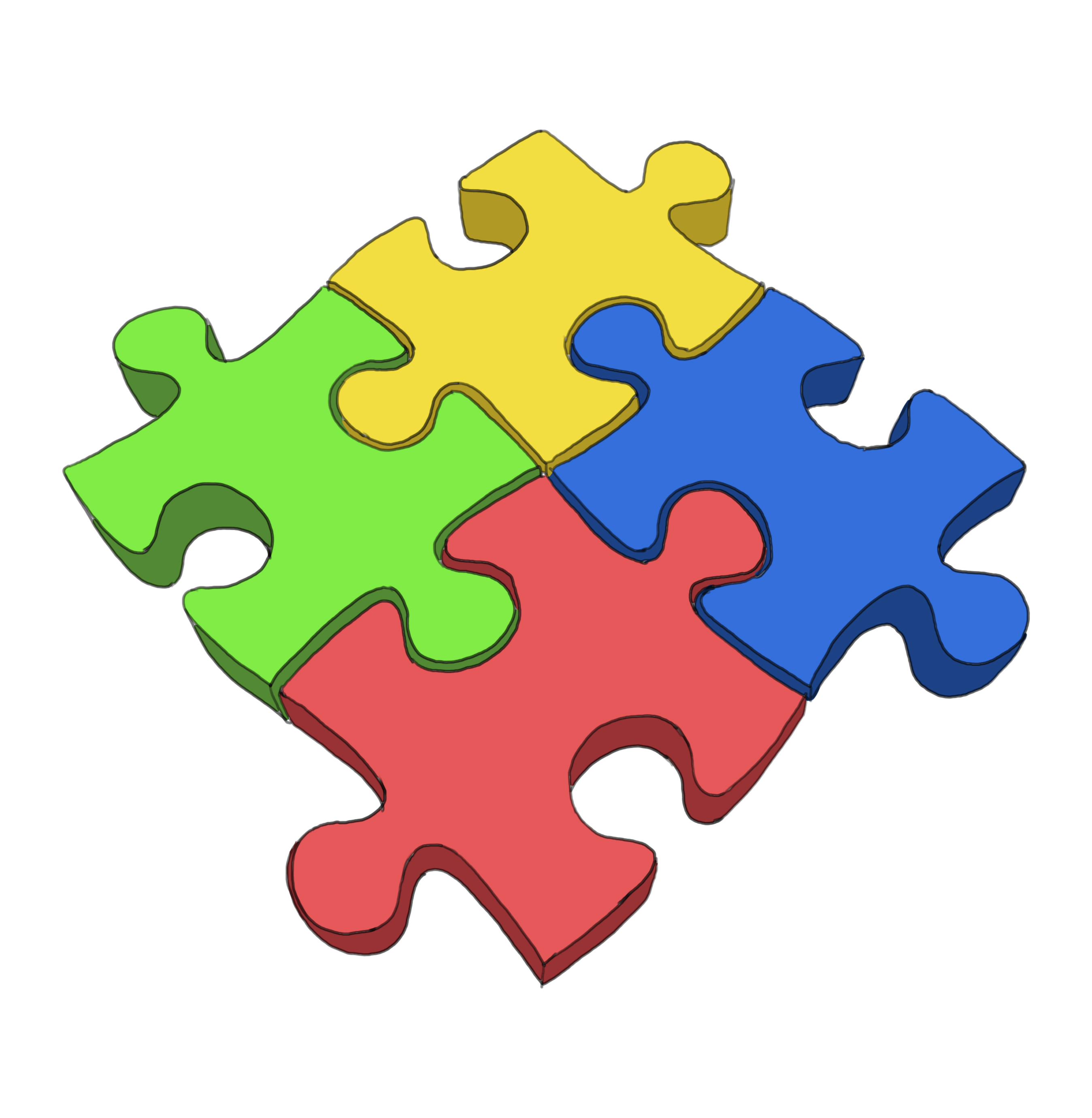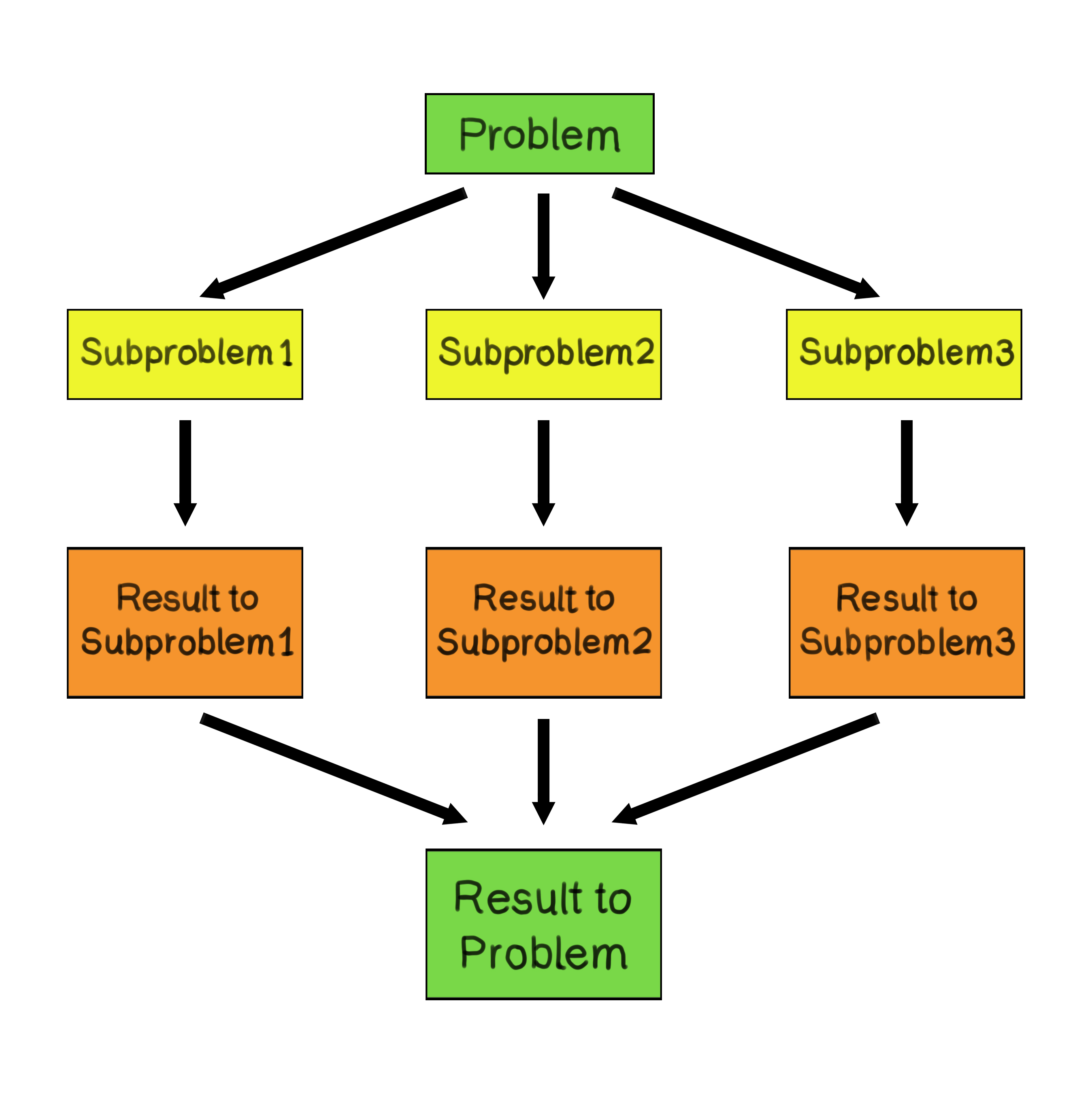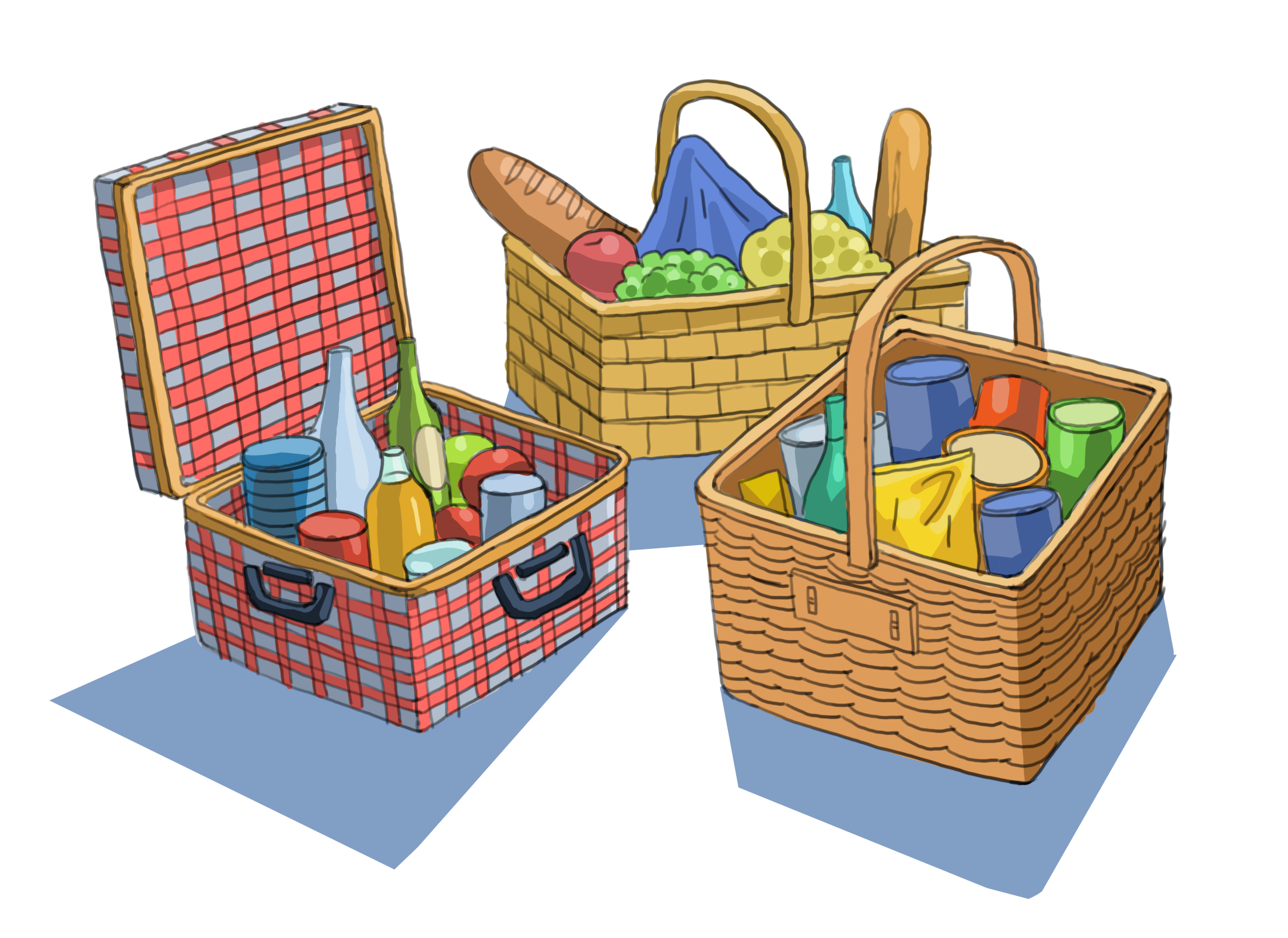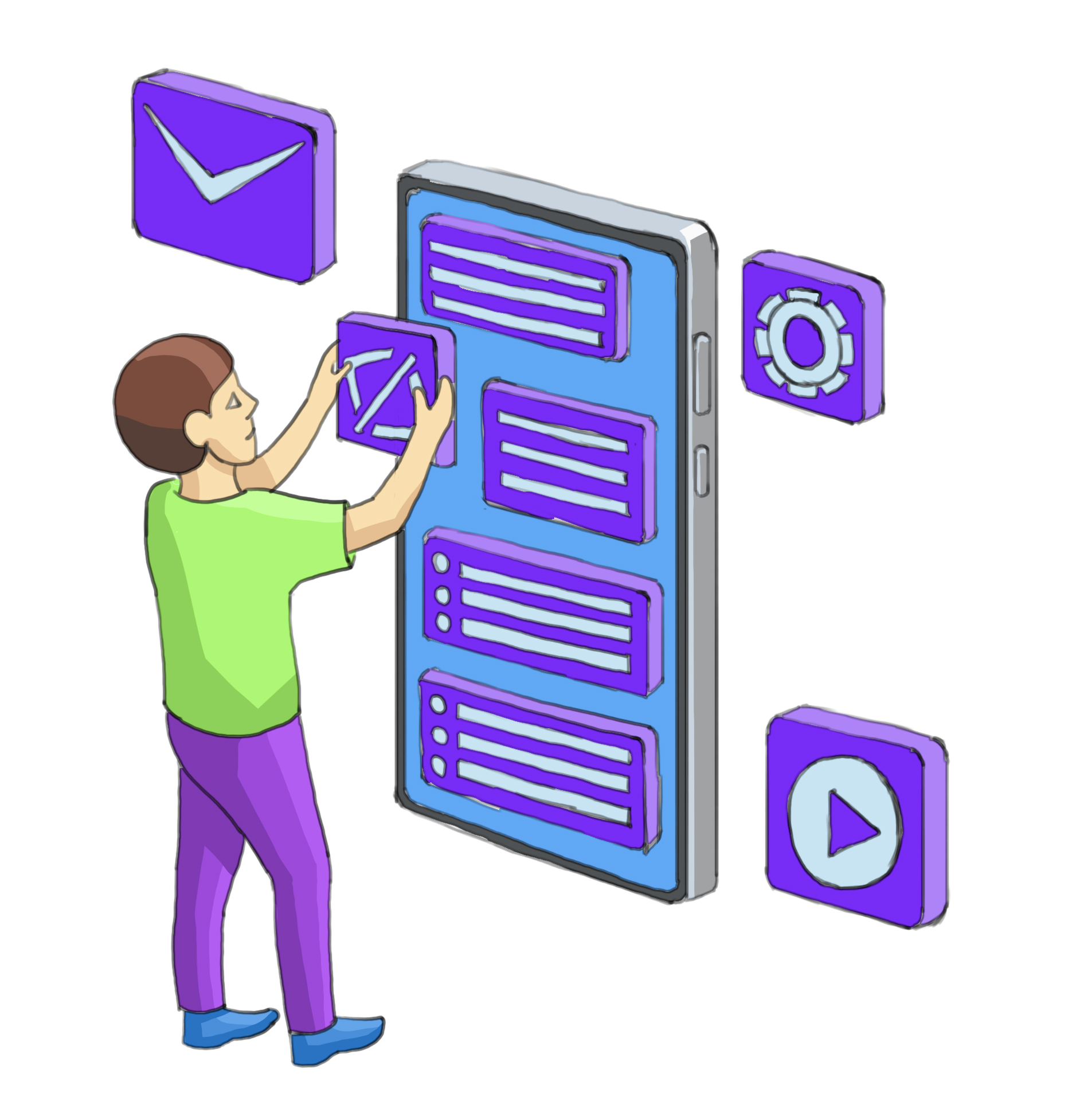Chapter 1: Understanding and Breaking Down Problems
Written by Andrei Guevorkian on 2023-09-20. Illustrated by Dengyijia Liu
Programming, at its core, is about solving problems. But before you can solve a problem using code, you need to understand it thoroughly. This chapter delves into the art of decomposing complex problems into smaller, more manageable parts, allowing you to tackle them step by step.
Table of Contents
The Essence of Problem Decomposition
The Essence of Problem Decomposition
Imagine you're faced with a jigsaw puzzle. If given all the pieces jumbled up in a box, it's overwhelming. But when you start grouping pieces by color or patterns and tackling small sections at a time, the task becomes more manageable. This is the essence of problem decomposition.

In programming, problems can often feel like a massive jigsaw puzzle, especially when you're just starting out. The trick is to break them down into bite-sized tasks that you can handle.
Benefits of Breaking Problems Down
- Clarity: By segmenting a big problem, you focus on one piece at a time, making it easier to understand.
- Achievable Milestones: Every small problem you solve is a milestone. This offers a sense of achievement and forward momentum.
- Identifying Issues: It's simpler to spot and correct mistakes or inefficiencies in smaller sections of work rather than in a large complex task.
- Collaboration: By decomposing tasks, multiple people can work on different components simultaneously.
Techniques for Decomposition
- List the Requirements: Before diving into a solution, outline what you need to achieve. This helps in understanding the scope of the problem.
- Visual Representation: Draw flowcharts or diagrams to visualize how different components relate.
- Simplified Explanation: Break down the problem as if you were explaining it to a friend. This can often help clarify complex concepts.
- Iterative Approach: Start with a basic version of the solution. Improve and refine it in iterations.

Activities
Activity #1
Imagine you are organizing a big family picnic and you need to ensure everyone has everything they need (food, drinks, and activities). How would you approach to organize this event?

Answer
Organizing a big family picnic can be a complex task. Here's one structured approach, among many, to ensure everything runs smoothly:
- Tally Attendees:
- Consult with family members to determine a tentative guest list.
- Categorize attendees by age: children, teens, adults, seniors.
- Plan Food and Beverage:
- Assess dietary preferences and restrictions. Consider a mix of vegetarian and non-vegetarian options.
- Consider hydration: plenty of water, perhaps some soft drinks and juices.
- Entertainment Arrangements:
- Plan age-appropriate games and activities. For instance, sack races, tug of war, musical chairs, frisbee, and cards or board games for adults.
- Think about bringing a portable speaker with a playlist that caters to the family's musical tastes.
- Seating and Shelter:
- Ensure enough seating. Seniors might prefer chairs and tables rather than picnic mats.
- Visit the location beforehand to see if there are any pavilions or covered areas available for use.
- Miscellaneous Preparations:
- Weather: Monitor forecasts; plan for rain with umbrellas or a backup venue.
- Parking: Ensure the site has sufficient parking or inform attendees of alternatives.
Remember, while this is one approach to plan, adaptability is essential.
Activity #2
Imagine you're tasked with designing a simple to-do list app that helps users organize their daily tasks. How would you approach the development of this app?

Answer
Designing a to-do list app, while conceptually simple, requires a focus on user experience to make it stand out. Here's a structured method to guide the development:
- Determine Core Functionality:
- Primary Purpose: Allow users to quickly add, modify, and delete tasks.
- Features: Task entry, due dates, priority levels, task categorization (e.g., work, personal, urgent), and reminders.
- User Interface (UI) Design:
- Visual Elements: Use subtle colors or icons on a simple interface to differentiate tasks based on priority or category.
- Quick Actions: Implement swipe gestures for marking tasks as done or for deleting them.
- Data Management:
- Local Storage: Save tasks locally so users can access them offline.
- Cloud Sync: Optionally, allow users to sync tasks across devices via the cloud.
- Navigation and Flow:
- List Views: Main chronological list with highlighted due tasks and a detailed view upon tapping.
- Search and Filter: Allow users to search their tasks or filter by category.
- Miscellaneous Features:
- Timely Alerts: Notify users of upcoming or overdue tasks based on set reminders.
- Dark Mode: A popular feature, offer a dark theme for better visibility in low light.
- Tutorials: For first-time users, a brief walkthrough highlighting the app's features can be helpful.
While this is one approach to plan, it's essential to remain open to feedback and iterative improvement in the world of app design.
Questions
Question 1
You're going on a camping trip for a weekend with five friends, and you are tasked with planning it. Write down everything you think you'll need for this trip, from food to equipment and entertainment.
Question 2
Write a short story with a beginning, middle, and end. Begin with just a one-line summary for the start, middle, and conclusion. In the next iteration, expand each line into a short paragraph. In the third and final iteration, refine the story by adding some details, dialogues, and descriptions.
Question 3
You're given the responsibility of designing the layout for a new local library. Consider various aspects of library design such as categorizing books (by genre, author, publication year), shelf labeling (maybe through color coding or other symbols), creating distinct zones (reading areas, computer stations, children's section), and ensuring accessibility for all visitors. How would you approach this task to provide an organized and user-friendly space?